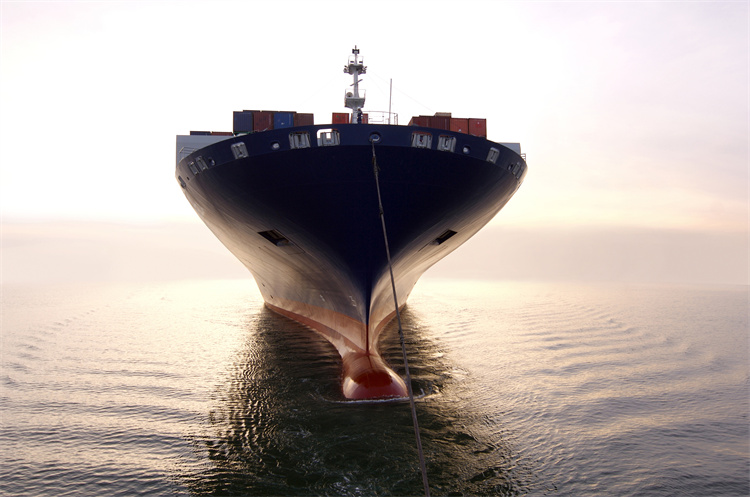A Volatile Year Ahead: 2025 Ocean Freight Market Trends

The ocean freight market is poised to undergo a significant transition in 2025, marking a departure from the prevailing trends of recent years. A confluence of factors, including shifting carrier alliances, evolving demand patterns, and a substantial increase in vessel capacity, is projected to reshape the industry landscape. For businesses reliant on ocean freight, understanding these dynamics is no longer optional but a strategic imperative. Proactive adaptation to this new environment will be critical for mitigating risks, optimizing costs, and maintaining a competitive edge in the global marketplace. This analysis will delve into the key trends shaping the 2025 ocean freight market, providing insights to inform strategic decision-making.
Current Market Conditions
Overview of Present Market
Data from UNCTAD
The United Nations Conference on Trade and Development (UNCTAD) provides valuable insights into the current state of the ocean freight market. According to their data, global seaborne trade is on a steady rise, with an anticipated increase of 2.3% by 2025. This growth reflects the resilience of the maritime industry despite recent global challenges. UNCTAD's analysis highlights the importance of adapting to these evolving conditions to maintain competitive advantage.
Insights from Krungsri Research
Krungsri Research offers additional perspectives on the ocean freight market. They project a growth rate of 2.0-3.0% for the sea freight market in both 2024 and 2025. This forecast underscores the potential for expansion within the industry. Krungsri emphasizes the need for businesses to strategically align with carriers. Companies that adopt a strategic approach can achieve up to a 15% reduction in shipping rates compared to those maintaining the status quo. This significant cost-saving potential makes it imperative for stakeholders to stay informed about market trends.
National Retail Federation Q4 volume estimates in December were adjusted well above projections from two months prior as frontloading began ahead of the possibility of a new strike and tariff increases
Data source: National Retail Federation, Global Port Tracker
Key Market Indicators
Container Volume Statistics
Container volumes serve as a critical indicator of market health. In 2025, container volumes are expected to grow by 3.0-4.0%, following a notable increase of 5.0-6.0% in 2024. This upward trend suggests robust demand for shipping services. Businesses must monitor these statistics closely to optimize their logistics strategies and capitalize on emerging opportunities.
Freight Rate Analysis
Freight rates remain a focal point for industry stakeholders. Shanghai container futures trading indicates that ocean freight rates on the Asia-Europe trade may fall in 2025 after peaking. Forecasts suggest that ocean cargo prices could reach $20,000 in 2025, potentially approaching the COVID-era peak of $30,000. Experts predict that rates may not see a significant decrease until early 2025, contributing to ongoing inflation in the market. Understanding these fluctuations is crucial for businesses aiming to manage costs effectively and maintain profitability.
Specific Trends in 2025

Projected Growth Rates
Industry Forecasts
The ocean freight forecast 2025 indicates a promising growth trajectory for the industry. Analysts predict a steady increase in global seaborne trade, with growth rates ranging from 2.0% to 3.0%. This expansion reflects the resilience and adaptability of the maritime sector in the face of economic challenges. Industry experts emphasize the importance of strategic alignment with carriers to capitalize on these growth opportunities. By doing so, businesses can achieve significant cost savings, potentially reducing freight costs by up to 15% compared to those maintaining the status quo.
Regional Variations
Regional variations play a crucial role in shaping the ocean freight forecast 2025. Different regions exhibit distinct growth patterns due to varying economic conditions and trade dynamics. For instance, Asia-Pacific is expected to lead the growth, driven by robust manufacturing activities and increasing consumer demand. In contrast, regions like Europe may experience moderate growth due to geopolitical uncertainties. Businesses must tailor their strategies to these regional nuances to optimize their logistics operations and maximize profitability.
Container Volume Changes
Expected Increases/Decreases
Container volumes are a vital indicator of market health and are expected to show significant changes in 2025. The ocean freight forecast 2025 suggests a growth in container volumes by 3.0% to 4.0%, following a substantial increase in the previous year. This trend highlights the growing demand for shipping services and the need for businesses to adapt their logistics strategies accordingly. Companies that proactively manage their container volumes can better navigate market fluctuations and enhance their competitive edge.
Impact on Global Trade
The anticipated changes in container volumes will have a profound impact on global trade dynamics. Increased container volumes facilitate smoother trade flows, enabling businesses to meet consumer demands more efficiently. However, fluctuations in container availability can pose challenges, potentially leading to supply chain disruptions. To mitigate these risks, companies should invest in advanced supply chain technologies and foster strong partnerships with logistics providers. By doing so, they can ensure seamless operations and maintain their market position.
Freight Rate Fluctuations
Historical Comparisons
Freight rate fluctuations have been a constant in the maritime industry, and the ocean freight forecast 2025 suggests continued volatility. Historical data reveals that freight rates have experienced significant peaks and troughs, influenced by factors such as fuel prices and geopolitical tensions. Understanding these historical trends is essential for businesses aiming to manage costs effectively. By analyzing past patterns, companies can anticipate future rate changes and make informed decisions to safeguard their profitability.
Future Predictions
Looking ahead, the ocean freight forecast 2025 predicts potential fluctuations in freight rates. Experts anticipate that rates may not see a significant decrease until early 2025, contributing to ongoing inflationary pressures. Strategic shippers, however, can leverage their insights to achieve cost reductions. By aligning with carriers and optimizing their shipping strategies, businesses can mitigate the impact of rising rates and maintain their competitive advantage. This proactive approach is crucial for navigating the complexities of the evolving maritime landscape.
Factors Influencing Trends
Economic Conditions
Global Economic Outlook
The global economic outlook significantly impacts the ocean freight market. Analysts predict steady growth in seaborne trade, driven by economic recovery and increased consumer demand. Businesses must stay informed about economic indicators to align their strategies with market conditions. Understanding these trends helps companies anticipate shifts in demand and adjust their logistics operations accordingly.
Inflation Impact
Inflation remains a critical factor affecting freight costs. Rising prices for fuel and raw materials contribute to increased shipping expenses. Companies that adopt strategic supply chain management can mitigate these costs. By leveraging advanced technologies and optimizing routes, businesses can achieve up to a 15% reduction in freight costs compared to those maintaining the status quo.
Geopolitical Events
Trade Agreements
Trade agreements play a pivotal role in shaping the ocean freight landscape. New agreements can open markets and create opportunities for growth. Conversely, changes or disruptions in existing agreements may lead to uncertainties. Businesses should monitor these developments closely to adapt their strategies and capitalize on emerging opportunities.
Political Instability
Political instability poses challenges to global trade. Conflicts and tensions can disrupt shipping routes and affect freight rates. Companies must develop contingency plans to navigate these uncertainties. By fostering strong relationships with logistics providers, businesses can ensure continuity and minimize disruptions in their supply chains.
Technological Advancements
Innovations in Shipping
Technological innovations drive efficiency in the shipping industry. Advances such as autonomous vessels and eco-friendly fuels enhance operational capabilities. Companies that invest in these technologies can improve their competitiveness and reduce environmental impact. Staying at the forefront of innovation allows businesses to optimize their logistics and meet evolving customer demands.
Digitalization of Supply Chains
Digitalization transforms supply chain management. Technologies like IoT and big data enable real-time tracking and decision-making. Businesses that embrace digital solutions can enhance transparency and efficiency in their operations. By integrating these technologies, companies can streamline processes and respond swiftly to market changes, ensuring a robust and agile supply chain.
Challenges and Opportunities

Market Challenges
Inflation Concerns
Inflation poses a significant challenge in the ocean freight market. Rising costs for fuel and raw materials drive up shipping expenses. Businesses face increased pressure to manage these costs effectively. Strategic planning becomes essential. Companies that adopt proactive measures can mitigate inflation's impact. They must leverage advanced technologies and optimize their supply chain strategies. This approach helps maintain competitive pricing and profitability.
Supply Chain Disruptions
Supply chain disruptions remain a persistent challenge. Events such as natural disasters, geopolitical tensions, and pandemics can cause significant delays. These disruptions affect the timely delivery of goods. Businesses must develop robust contingency plans. They should foster strong relationships with logistics providers. This strategy ensures continuity and minimizes the impact of unforeseen events. Companies that prepare for disruptions can maintain their market position and customer satisfaction.
Opportunities for Growth
Technological Innovations
Technological innovations present significant growth opportunities. Advances in shipping technology enhance operational efficiency. Autonomous vessels and eco-friendly fuels reduce costs and environmental impact. Companies that invest in these innovations gain a competitive edge. They improve their logistics capabilities and meet evolving customer demands. Embracing technology allows businesses to optimize their operations and drive growth.
Emerging Markets
Emerging markets offer substantial growth potential. Regions such as Asia-Pacific and Africa exhibit robust economic development. These markets present new opportunities for expansion. Businesses must tailor their strategies to capitalize on these opportunities. They should focus on building strong partnerships and understanding local market dynamics. By doing so, companies can tap into new revenue streams and enhance their global presence.
Strategic Shippers Can Reduce Freight Costs in 2025: Strategic shippers can achieve a 5-7% reduction in freight costs compared to status quo shippers. The difference in rates between being a “status quo” shipper and a strategic shipper could be as much as a 15% difference in rates. This highlights the importance of strategic planning and carrier partnerships in reducing freight costs.
In conclusion, the ocean freight market in 2025 presents both challenges and opportunities. Businesses must navigate inflation and supply chain disruptions while leveraging technological innovations and emerging markets. Strategic planning and proactive measures will be key to success. Companies that adapt to these trends can achieve significant cost savings and drive growth in the evolving maritime landscape.
The ocean freight forecast 2025 reveals critical insights for businesses. Companies must adapt to evolving trends to thrive. Key strategies include aligning with carriers and leveraging technological advancements. Strategic shippers can achieve up to a 15% reduction in freight costs by optimizing their logistics operations.
JUSDA excels in providing comprehensive supply chain solutions. Their JusLink platform integrates suppliers and customers, enhancing efficiency. With a global presence and advanced technologies, JUSDA supports businesses in navigating the complexities of the ocean freight forecast 2025. Their expertise ensures seamless operations and competitive advantage.
See Also
Exploring the Latest in Sea Freight Logistics for 2024
Understanding the Influence: Trends in Logistics Risks
Upcoming Trends for Enhanced Supply Chain Efficiency
